Viking Age outlaws, taboo, and ritual in Iceland’s lava fields.

THE HALLMUNDARHRAUN lava field—basalt dark, with great swells and a froth of white moss—looks like a stormy sea whipped into a frenzy and frozen in place. It begins under the Langjökull glacier in mountains to the east and winds some 30 miles to Hraunfoss—literally, “Lava Falls”—where a crystalline river of melt water pours directly from its wide, stony face. It’s very Icelandic: fire and ice, water and stone. When the lava flowed at the end of the ninth century, shortly after the Vikings arrived on the island, it was probably the first volcanic activity of its kind that northern Europeans had ever witnessed. Those early residents of western Iceland may have heard eruptions, seen a fiery glow on the horizon, and tracked its spread across the landscape, a spread that ultimately consumed around 90 square miles.
Hallmundarhraun, just a few hours’ drive from Reykjavík, is riven with lava tubes which form when fresh molten rock flows through an existing field of cooled lava. Over time, the ceilings of some of these tunnels partially collapse to form caves. There are some 500 across Iceland, and around 200 hold evidence of human occupation. One of these caves is Surtshellir, part of a lava tube complex that is Iceland’s longest, at more than two miles. It is named for Surtr, the elemental fire giant of Norse mythology, the “scorcher” or “blackener,” ruler of Muspelheim, who will kill all gods and life at the end of time. Inside is one of the more enigmatic archaeological sites on the island.
この記事は Archaeology の May/June 2017 版に掲載されています。
7 日間の Magzter GOLD 無料トライアルを開始して、何千もの厳選されたプレミアム ストーリー、8,500 以上の雑誌や新聞にアクセスしてください。
すでに購読者です ? サインイン
この記事は Archaeology の May/June 2017 版に掲載されています。
7 日間の Magzter GOLD 無料トライアルを開始して、何千もの厳選されたプレミアム ストーリー、8,500 以上の雑誌や新聞にアクセスしてください。
すでに購読者です? サインイン
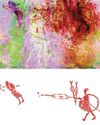
A Very Close Encounter
New research has shown that human figures painted in red on a rock art panel in central Montana depict individuals engaged in a life-or-death encounter during an especially fraught historical moment.
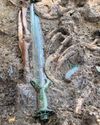
A Sword for the Ages
A zigzag pattern, now tinged with the green-blue patina of oxidized metal, adorns the octagonal hilt of a rare sword dating to the Middle Bronze Age in Germany (1600-1200 B.C.) that was recently excavated in the Bavarian town of Nördlingen.
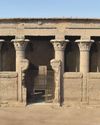
Ancient Egyptian Astrology
For centuries, layers of soot have coated the ceilings and columns in the entrance hall of Egypt's Temple of Esna. Now, an Egyptian-German team of researchers, led by Hisham El-Leithy of the Egyptian Ministry of Tourism and Antiquities and Christian Leitz of the University of Tübingen, is restoring the temple's vibrant painted reliefs to their original brilliance.
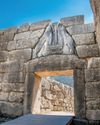
BRONZE AGE POWER PLAYERS
How Hittite kings forged diplomatic ties with a shadowy Greek city-state
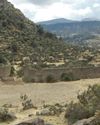
RITES OF REBELLION
Archaeologists unearth evidence of a 500-year-old resistance movement high in the Andes

Secrets of Egypt's Golden Boy
CT scans offer researchers a virtual look deep inside a mummy's coffin

When Lions Were King
Across the ancient world, people adopted the big cats as sacred symbols of power and protection

UKRAINE'S LOST CAPITAL
In 1708, Peter the Great destroyed Baturyn, a bastion of Cossack independence and culture

LAPAKAHI VILLAGE, HAWAII
Standing beside a cove on the northwest coast of the island of Hawaii, the fishing village of Lapakahi, which is surrounded by black lava stone walls, was once home to generations of fishers and farmers known throughout the archipelago for their mastery of la'au lapa'au, or the practice of traditional Hawaiian medicine. \"

A MORE COMFORTABLE RIDE
Although the date is much debated, most scholars believe people 5,000 years ago. For thousands of years after that, they did so without saddles. \"In comparison with horse riding, the development of saddles began relatively late, when riders began to care more about comfort and safety in addition to the horse's health,\" says University of Zurich archaeologist Patrick Wertmann.